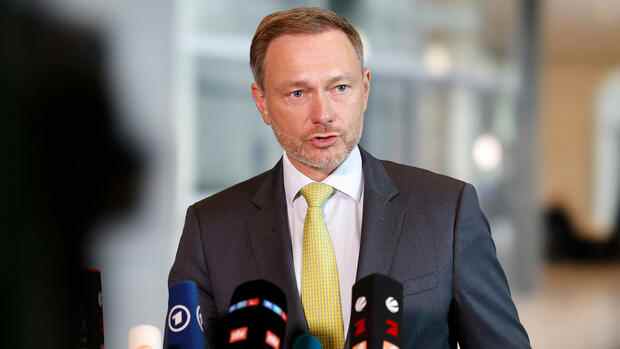Berlin After the federal government had long been criticized for underinvestment, it has taken countermeasures in recent years. Although social spending remains by far the largest item in the federal budget, investment funds for areas such as digitization, climate protection and mobility have been increased significantly. This is the result of a study by the Bavarian Business Association (VBW), which is available to the Handelsblatt.
Experts from the German Economic Institute prepared the study for the VBW and analyzed the federal budgets since 2014. They don’t break down expenditure by ministry as is usual, but specifically examine the funds for future tasks they have defined.
For example, while the federal government had earmarked only 420 million euros for digitization in the 2014 budget, in 2021 it was 8.94 billion euros. As a result, the share of expenditure on digitization in the total expenditure increased from 0.1 to 1.6 percent. In climate protection, there was an increase in spending from 3.49 billion euros to 15 billion euros or from 1.1 to 2.6 percent in the same period.
According to the 2014 study, the federal government planned 27.5 billion euros in mobility, which includes investments in rail. 44.3 billion euros were planned for 2021. Funding for education and research rose from 13.9 billion to 27.1 billion euros. However, since the other expenditures have also risen significantly, the relative increase is not that large: the share of education expenditures in the total budget rose from 4.6 to 4.7 percent.
Top jobs of the day
Find the best jobs now and
be notified by email.
>>> Also read: The “future rate”: A new measure shows how future-proof investments are
VBW General Manager Bertram Brossardt says: “In view of the enormous investment, innovation and transformation policy tasks, it is right that the federal government has been significantly strengthening budget items geared to this for years.” However, there is a big catch from the point of view of the economy: “Unfortunately, Existing funds are often not spent due to bureaucratic hurdles.”
There is often a large gap between target and actual values
The IW experts also compared how much money the federal government had budgeted for each year – and how much it was actually able to spend in the end. There is often a large gap between these target and actual values.
Example of digitization: While 8.94 billion euros were planned for digitization in the 2021 budget, only just under four billion euros were spent on it. Half of the funds originally planned could not be spent. In the area of climate protection, only 10.6 billion euros flowed out of the estimated 15 billion euros.
money for digitization
4
billion euro
were spent by the federal government for digitization in 2021, although 8.94 billion were planned for this in the budget.
“It is worth considering, however, that politicians have apparently not been able to fully implement the goals they have set themselves in the past,” says the study. “Because the actual values in these areas were always lower than the target values.” Experts have been criticizing the low outflow of funds for some time. They blame long planning and approval processes, among other things.
>> Read also: The state as savior in every crisis? About the fatal error of the fully comprehensive policy
According to the study, around 22 percent of the funds are also lost in the area of mobility, and 20 percent in education and research. On the other hand, things are looking better for classic infrastructure investments, for example in rail. Almost the entire estimated sum of 14.3 billion euros was actually spent here in 2021.
Accordingly, the plus for the investments is reduced by comparing planning and actual expenditure. “Although the spending targets in the form of the target values were increased sharply from 2018 to 2021, the actual expenditure lagged far behind,” it says.
Overall, the future-oriented expenditures defined by the IW for digitization, climate protection, mobility as well as education and research in 2021 amounted to around 80 billion euros or almost 15 percent of the total budget.
The Kiel Institute for the World Economy (IfW Kiel) recently presented a study according to which investments in the federal budget still play a subordinate role. Social security dominates expenditure in the federal budget. The IW experts have also created a ranking of the largest items.
In first place is the subsidy for pension insurance both in 2014 with 83 billion euros and in 2021 with 106 billion euros. The funds for the labor market are also found in the top places, as is the case for statutory health insurance.
More: Economists complain about imbalances in the budget – “Urgently question all subsidies”
